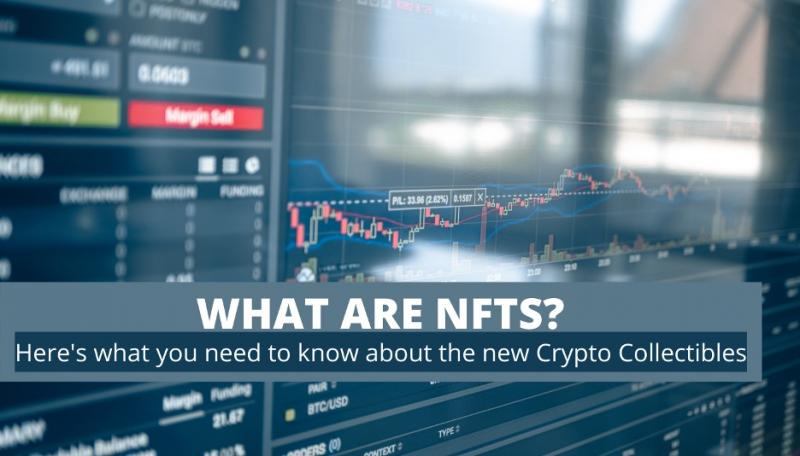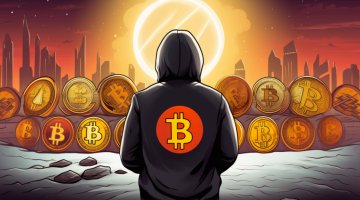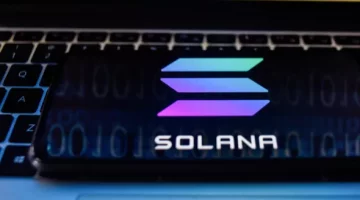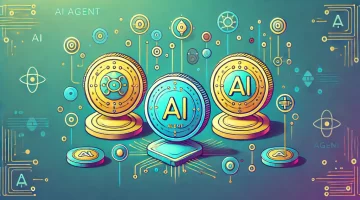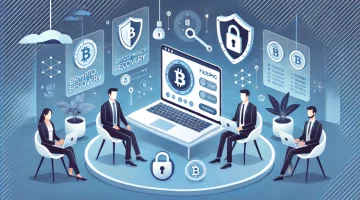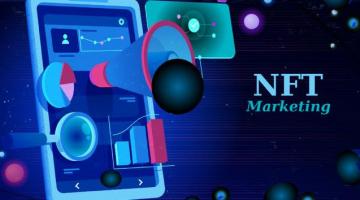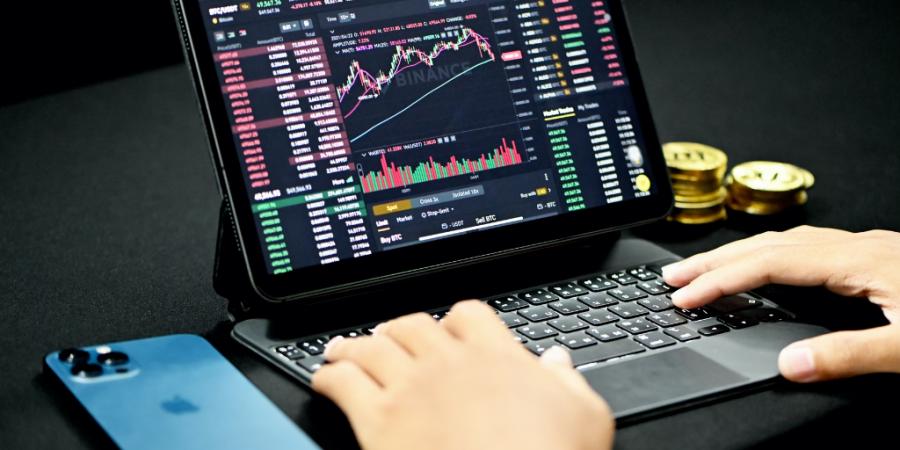What are NFTs? Here's the breakdown you need to know about the new Crypto Collectibles
Introduction
If you keep in touch with news from the finance sector, you may have heard about NFTs. They sure made a stir when a collage composed of 5,000 digital pieces, created by Mike Winkelmann, an artist known as Beeple, was auctioned for a whopping 69 million USD. Since then, NFTs have made many such appearances on the news such as Nyan Cat being sold for 172,000 USD or a New York Times column earning half a million dollars in charity. So what is NFT and how do you get into the market of it yourself? We will break it all down in this article.
What is an NFT?
You may be aware that in a decentralised framework, you can “tokenize” your physical assets by assigning them a digital value. These tokens can now be used in a variety of ways; some are "fungible," meaning that they can be broken down into different components which can be interchanged, while some others are "non-fungible," meaning the above does not apply to them and they can only be traded as a whole. Currency and gold, for example, are fungible because a certain amount of each may be substituted with the same amount of the other. Artwork or a blog post, on the other hand, is non-fungible since they are not divisible in sections and cannot be replaced by another, even though it is a duplicate of the same. These non-fungible tokens are abbreviated as NFTs.
NFTs are mostly used to tokenize rare and valuable non-fungible assets such as paintings, music records, and the like. However, you can use NFTs to represent and trade any tangible or intangible item such as a computer, a coupon, virtual items within video games such as skins, virtual currency, weapons and avatars, collectibles like digital trading cards, video footages of iconic sports moments, or even a tweet. You receive a digital certificate of ownership of the said asset, in exchange for the NFT. A blockchain public ledger, similar to cryptocurrencies, keeps track of who owns what. Smart contracts can also be embedded in NFTs, giving the artist a share of any potential token sales in the future.
How do NFTs work?
The majority of NFTs right now run on Ethereum blockchain, however, other blockchains can also offer their own versions of NFTs. The main reason for this to be done on a blockchain platform is to avoid piracy. The multiple layers of blockchain security protect the ownership and keep the data from being hacked, all the while maintaining an automatic and immutable track of each registration, transaction, and ownership. While the file that is being sold can have copies, its NFTs cannot be replicated. The concept is similar to owning an original art form and its copy. One set of NFTs includes unique information that sets them apart from other NFTs and allows them to be easily verified. Since each object can be traced back to the original issuer, the creation and circulation of fake collectibles become pointless. Having been built on a blockchain platform, these can also not be even deleted or destroyed; and so stay on forever.
What is more, being built on blockchain, blockchain-based NFTs are compatible with anything built using that particular blockchain. So you can trade the NFTs you have for an entirely different set of NFTs on the same marketplace. For example, you can trade an artform with a concert ticket. You can even use the music album you own as collateral for a loan.
What decides the value of NFTs?
To be completely frank, the value of NFTs are decided by nothing but what someone is willing to pay for them. The more unique a piece of item is, the more people will pay for it - a simple rule of supply and demand applies to NFTs. The value of NFTs is determined by the sum of the following:
- Utility:
The utility of NFTs is determined by how they can be used. The uniqueness of the item certainly creates value, but the value will go even higher if the same item can have multiple uses. So for example, if you are to buy a rare and powerful card relevant to one game that will have value in multiple games, its worth will go up.
The utility of your of NFTs will also increase if the people who would be holding your NFTs get extra benefits because of them from other companies as well. Therefore, you may collaborate with other companies to increase the value of the NFTs you create or hold.
- Ownership history:
Ownership of NFTs provide value to them just the way you expect them to - the more influential the original owner of an item is, the more valuable it is. It can be a famous artist, a celebrity, or a famous brand/company whose property the original item was. So either the artist, celebrity, or the brand itself sells the NFTs of the item, or a buyer of the same resells it.
- Future value:
An NFT's future value is obtained from both valuation shifts and future cash flow. Speculation influences valuation, which can be the primary force of price appreciation in some cases. This valuation is again conducted with the application of the simple law of demand and supply. Once you generate demand for an item by creating scarcity, you can add price speculation to increase the value further. For instance, one of the reasons StockX, a sneaker marketplace, is valued at $1 billion because it stimulates people to bet on the price of shoes, creating a rare sneaker market.
The interest or dividends received by the NFT's original owner are referred to as future cash flow. SuperRare, for example, pays the original artists a 3% royalty any time the NFTs coming from their artwork is subsequently sold on the secondary market. Moreover, NFTs are just like any other assets, as mentioned earlier. So additional cash flow can be created when they get leased and used as collaterals in loans.
- Liquidity premium:
In simple terms, the high liquidity of an asset means a higher value for its NFTs. NFTs created using Ethereum usually have more potential buyers than the ones created on other blockchain platforms, since they can be effectively traded on secondary markets with anyone who owns ETH, without much competition. This creates a higher trading volume for these NFTs, which means higher liquidity, and thereby higher value. Investors prefer these because of their low risk - even if the NFTs lose their utility value after a linked platform closes, highly liquid NFTs will retain their value as long as people are willing to buy and sell them.
How do you create, buy, or sell NFTs?
Most NFT platforms are completely open for everyone - anyone can create NFTs on them. However, a few of them require pre-approval of the artist by the platform or the blockchain community. Once this stage is completed, you must find secure cryptocurrencies payment solutions for the entire process. First, decide the marketplace(s) you want to list your NFT(s) on, as this will influence how and where you should create your NFTs. Currently, it is best to choose an Ethereum platform as they have the highest user base as discussed before. There are many such NFT creations and/or trading platforms, like OpenSea, SuperRare, Mintable, Nifty Gateway, Sorare, and several others. Once you are registered with a platform, it’s not that difficult to trade in NFTs.
Creating and selling NFTs
Different blockchain platform may have their own instructions for creating NFTs. Nevertheless, the basic process is pretty much the same -
- First, create a blockchain wallet supported by the platform that you pick for creating NFTs. This is where you will store your digital currencies. Some of the popular wallets are Metamask, Trustwallet, Dapper, etc. You will find simple chrome extensions for these. These will partner with platforms to help you buy and sell your artwork on the blockchain. They serve a dual purpose - of a wallet and of an e-signature.
- Create an account on the platform of your choice.
- Create digital content that you want to sell.
- Upload it to the platform with a link which you will find on the platform.
- Choose a price and whether you want to copyright the content to be transferrable.
- Finally, list the item on the platform by signing the transaction with your particular blockchain wallet.
Buying NFTs
Once you have an account and a wallet on a marketplace, buying NFTs is a piece of cake. All you have to do is fund your wallet with some cryptocurrencies of the blockchain platform of your choice (e.g., ETH for Ethereum platform). Exchanges such as Coinbase, Kraken, Binance, etc. enable you to buy ETH with your credit card. The verification of your wallet may take up to a few days, but once it’s done, your account is ready as an NFTs buyer, and you can simply select NFTs and start bidding. You can either bid on an NFT's primary offering or wait to see what the secondary market value is.
Legalities to keep in mind while dealing with NFTs
NFTs are a relatively new concept, and strict legal regulations regarding them have not arisen yet. However, the more they grow and common people end up making millions of dollars, the more we come close to government regulations being levy on them. So it is best if you keep yourself out of bounds of legal complications beforehand. So before you decide to be on an NFTs platform in any role, it is advisable to take the guidance of experienced blockchain lawyers. In any case, you should be aware of the legal implications in the following scenarios:
Securities regulations:
NFTs usually do not grant the purchaser, i.e. the token holder, any profit-sharing or decision-making power in their blockchain. As a result, they sometimes do not meet the definition of "security tokens" and thus do not fall under the existing financial regulations governing blockchain tokens. However, NFTs in the following scenarios may be considered as security tokens, and the financial regulations will apply:
- Projects with a large number of NFTs, which are difficult to manage.
- When the artist creates a platform to make secondary trading of NFTs easier,
- NFTs “fractionalised” and sold to private investors,
- When NFT buyers collect a royalty or valuation from the underlying asset, and the tokens are considered to be profitable investments.
Anti-money laundering and sanctions:
Anti-money laundering (AML) laws, such as the Bank Secrecy and Confidentiality Act and restrictions placed by the Australian Department of Foreign Affairs and Trade (DFAT), can apply to any cryptocurrency or token exchange transaction.
Regulatory requirements are waived for companies that arbitrate transactions necessary and important to differentiate goods or services. NFT-related businesses may need to conduct compliance audits to see if they fall under this exemption.
If an NFT involves a smart contract to execute a payment, further scrutiny of compliance conditions is needed. NFT transactions that fall under the definition of a regulated process under the Bank Secrecy and Confidentiality Act would be subjected to strict AML requirements and standards.
Cybersecurity:
In this day and age, absolutely anything on the internet can face a gruesome cybersecurity assault. Even though blockchain technology protects them from most hacks, 51% attack still remains a possibility, where even blockchain falls vulnerable. Therefore, a company should keep itself prepared with an insurance plan where they specifically add insurance policies to include NFT hacking.
Intellectual property rights:
Intellectual property right aka copyright is one of the biggest concern while selling any original art form, especially on the internet. As there still isn’t any separate law regulating digital copies, the initial smart contract defining the rights of the seller and the buyer needs to be bullet-proof and absolutely comprehensive.
Conclusion
Soon into the future, NFTs may be used to tokenize any real-world asset, rendering asset ownership transparent and incorruptible. There may be NFTs for real estate deeds, car names, company ownership, and many such big and complicated matters. Now that you understand what they are, how to create, sell, and buy them, and the legal matters that you need to keep in mind; you are now ready to delve into the NFT world and we hope you will thrive in it. We wish you all the best.
Author Bio:

Ralph Kalsi is an entrepreneur, blockchain consultant and blockchain enthusiast who collaborates with businesses in Australia. With his vast knowledge and industry experience in blockchain, he helps to drive sustainable business growth. He is the CEO and proud founder of Blockchain Australia.
More to Read:
Previous Posts:
